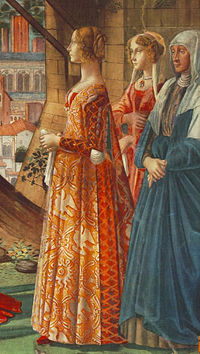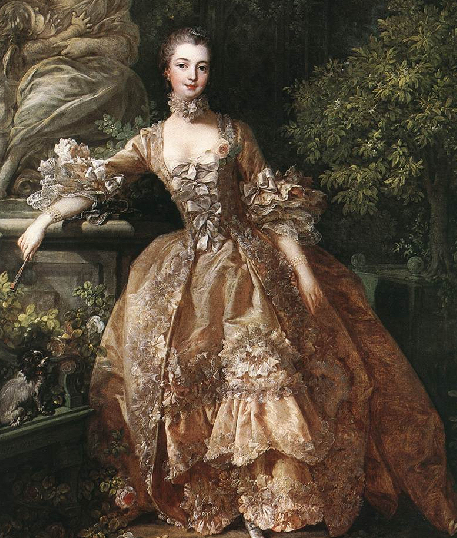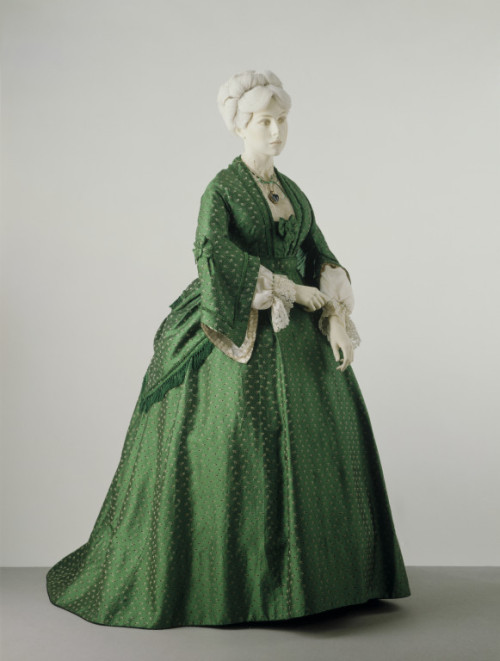Hey everyone, today I have a special guest post by Ashley J. Barnard, who is the author of Shadow Fox and Fox Rising. Ashley is here today in order to promote her first historical fiction novel In Byron's Shadow, which is a Victorian Romance. At the end of this post you will have an opportunity to win a copy of In Byron's Shadow and this giveaway is open worldwide!
A Tale of a Portrait
by Ashley J. Barnard
Hi. My name is Ashley, and I have an unhealthy obsession with Lord Byron. Yeah, I know he’s been dead for almost 200 years, and it sounds a little creepy. But a girl should have a hobby, right?
Byron and I were introduced about ten years ago, when I was cast in a Tom Stoppard play called Arcadia. My character was a thirteen-year-old in love with the poet, and though I had heard of him, I didn’t really know him yet. There were enough tantalizing tidbits in the play to get me interested, and when I started doing a little research, I was done for. After all, the man was beautiful, a poet, and very, very wicked. What’s not to love?
Soon I was reading biographies and collections of his letters, just for “fun.” He temporarily derailed my fantasy-novel aspirations; I took about a five-year break from fantasy to write three novels that featured Byron. You would think they all would have been historical fiction, but only one of them was; the other two were science fiction and contemporary. And the historical-fiction novel came as a complete surprise: I only wanted to read more of his letters, and instead ended up writing a novel, more or less, about his portrait, and his daughter Ada.
Reading 19th-century letters may sound boring to some, but Byron’s were incredibly witty, eloquent and charming, with his acerbic commentaries on society. I especially enjoyed reading his letters to and from his wife Annabella, knowing that while they called each other cute names like “Duck,” they were secretly loathing each other, and Annabella was plotting his downfall almost from the beginning of their marriage. Anyway, a few years ago I was at the library in the biography section, looking for another volume of letters to read, when I spotted something new: The Bride of Science: Romance, Reason, and Byron’s Daughter by Benjamin Woolley. I knew about Ada, of course, but only as Byron and Annabella’s only child. I didn’t know that she was important enough, in and of herself, to warrant her own thick biography. I read the introduction, and I was hooked. Forgetting about the collection of letters, I checked out Ada’s biography instead, and by the time I got home, I had the makings of a new novel.
The introduction of Bride of Science reads almost like a thriller. Ada Byron, on her twentieth birthday, is given a sealed casement. Present is Dr. King, the former manager of a lunatic asylum, to ensure that Ada, upon opening the casement, does not give way to violent hysterics. Ada knows what she’s about to open; she passed by it hundreds of times in her youth, but she’s never actually seen it. Her grandparents, at Annabella’s command, kept a thick velvet curtain drawn over it at all times, so that Ada might never catch a glimpse of her father’s face. Annabella fervently believed that if Ada even saw what Byron looked like, the poisonous blood of poetry that ran in her veins would be activated, and she would fall victim to lewdness, madness and debauchery, like her father.
The portrait in question is probably the most famous portrait of Byron in which he is featured in Albanian dress. It’s a stunning portrait done by Thomas Phillips in 1814, which has a turbaned, mustached Byron dressed in extravagant silks with a ceremonial sword. When Ada opened the casement, she was visibly unaffected, but a few years later she did report being at war with her feelings. Annabella had steered her toward math and science, but her father’s poetry awakened her passion.
I devoured the biography, and discovered another interesting tidbit. When Ada was eighteen, she attempted to elope with her shorthand tutor. While Woolley maintained that the tutor’s identity is officially unknown, it is believed that he was William Turner, the brother of Edward Turner who was a chemistry professor at Cambridge. But because next to nothing is known about this man, he leaves much to the imagination. And that, coupled with the amazing story of the portrait, became the foundation for my novel, In Byron’s Shadow.
Nicholas Price is a young, aspiring poet obsessed with Lord Byron. He is heir to his father’s title and estate, and when he meets Ada Byron on his twenty-first birthday, he is determined to marry her, whatever the cost. But because her mother disapproves of his devotion to Byron, he disguises himself as a shorthand tutor named William Turner. And while we all know that their intended elopement doesn’t work out, this is where In Byron’s Shadow really begins, and the portrait of Byron plays an integral part.
During and after the writing of this novel, I fantasized about having that portrait on the cover. It truly is stunning, and because it is an important plot point, I knew it would be perfect. When the book was finished and ready to go, I went about finding the rights to the portrait. It turns out the Government Art Collection in London owns the portrait, and they were kind enough to grant me a license for the image. Then my good friend, writer and graphic artist T.K. Toppin, whipped up a lovely design to integrate with it. I’m thrilled to have this as my cover, because as you read about this famous portrait, you’ll be able to see exactly what I’m talking about.
If you’re interested in Ada Byron, I highly encourage the biography by Benjamin Woolley. Ada truly does have a claim to fame entirely separate from being Byron’s daughter; she’s credited with being one of the first “computer programmers” because of her work with Charles Babbage and his Analytical Machine. And nothing passes the time like a good Byron biography; my favorite is Byron: Child of Passion, Fool of Fame by Benita Eisler.
Thanks for listening. I’m really happy to be here at Romantic Poets Anonymous, and I don’t plan on leaving anytime soon.
* * *
Ashley is the author of the award-winning Shadow Fox series (Champagne Books) and three published stage adaptations of Jane Austen’s novels (Dramatic Play Publishing). For ten years she and her husband James ran Actors’ Renaissance Theatre, a Shakespearean theater company with whom she acted in several productions. She lives in Phoenix, Arizona with James and their eight-year-old daughter Alexandria. In Byron’s Shadow is her newest release, and is available on Amazon.com. Visit her website at www.ashleyjbarnard.com.
Book Synopsis:
 At the age of twenty-one, Nicholas Price has the world at his feet. He has just graduated from Oxford, he is heir to his father's title and fortune, and he is about to meet Ada Byron, the daughter of his idol Lord Byron. His life falls apart, however, when an attempted elopement with Ada ends in disaster, resulting in his disinheritance. Destitute, he takes up residency in his mother's country estate, which is on the brink of ruin.
At the age of twenty-one, Nicholas Price has the world at his feet. He has just graduated from Oxford, he is heir to his father's title and fortune, and he is about to meet Ada Byron, the daughter of his idol Lord Byron. His life falls apart, however, when an attempted elopement with Ada ends in disaster, resulting in his disinheritance. Destitute, he takes up residency in his mother's country estate, which is on the brink of ruin. Ten years later, now a cynical misanthrope, Nicholas receives a visit from Catherine O'Reilly. Catherine once assisted Nicholas in obtaining access to Ada, and as she has also been cast out by her father, she has come to Nicholas for shelter. Catherine has been raped and is pregnant, but refuses to name her rapist. Nicholas agrees to take her on as a maid, but focuses all of his attention on winning Ada back. It is his eccentric brother James who can see through the submissive servant to the fiery, passionate woman within.
When more encounters with Ada end badly, it is Catherine who opens Nicholas's eyes to see how far he has taken his obsession with Byron. It is also she who helps him nurture his poetry, and to see the blessings around him in spite of his financial ruin. Soon Nicholas cannot resist falling into a love triangle involving Catherine and James, all of them unaware that the secret Catherine is harboring is about to shatter the fragile world Nicholas has managed to forge.
On to the Giveaway:
Ashley has graciously offered up a Kindle version or a Pdf. version of In Byron's Shadow. The lucky winner will be able to choose which of the two version they would like to receive. This giveaway is open Internationally and it ends June 13th. To sign up for this giveaway please follow the guidelines listed below.
Giveaway Guidelines:
-Please leave a comment below stating what you enjoyed most about Ashley's guest post.
-You must be a Follower of this blog through the GFC follower in order to be entered into this giveaway.
-Please leave your name and email address in order for me to contact you if you are the winner. If an email is not listed then unfortunately you will not be entered.
+1 extra entryfor being a new follower of this blog.
+1 extra entry each time you post this giveaway on twitter, facebook and/or on your blog somewhere. To count please leave a link in the comment section.


































